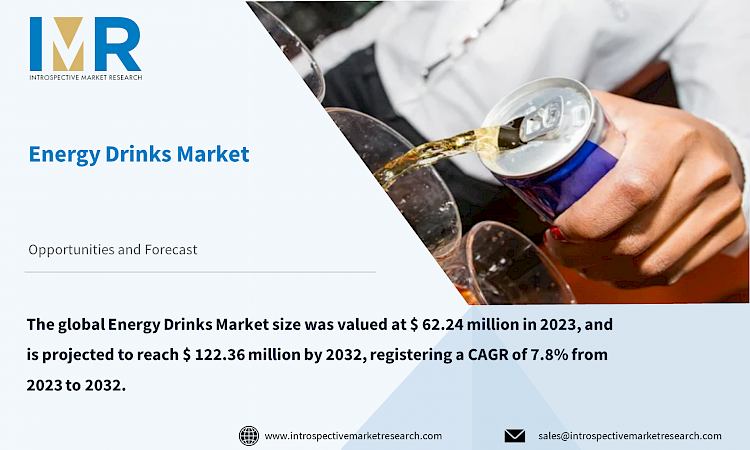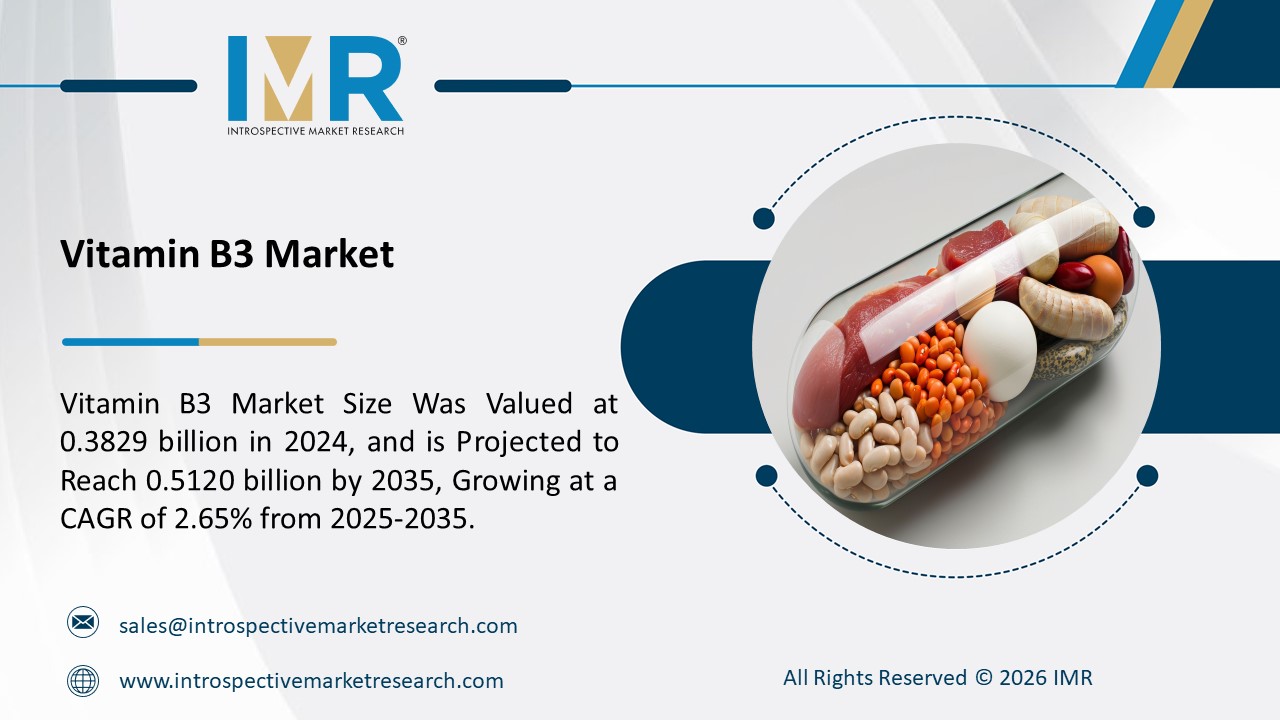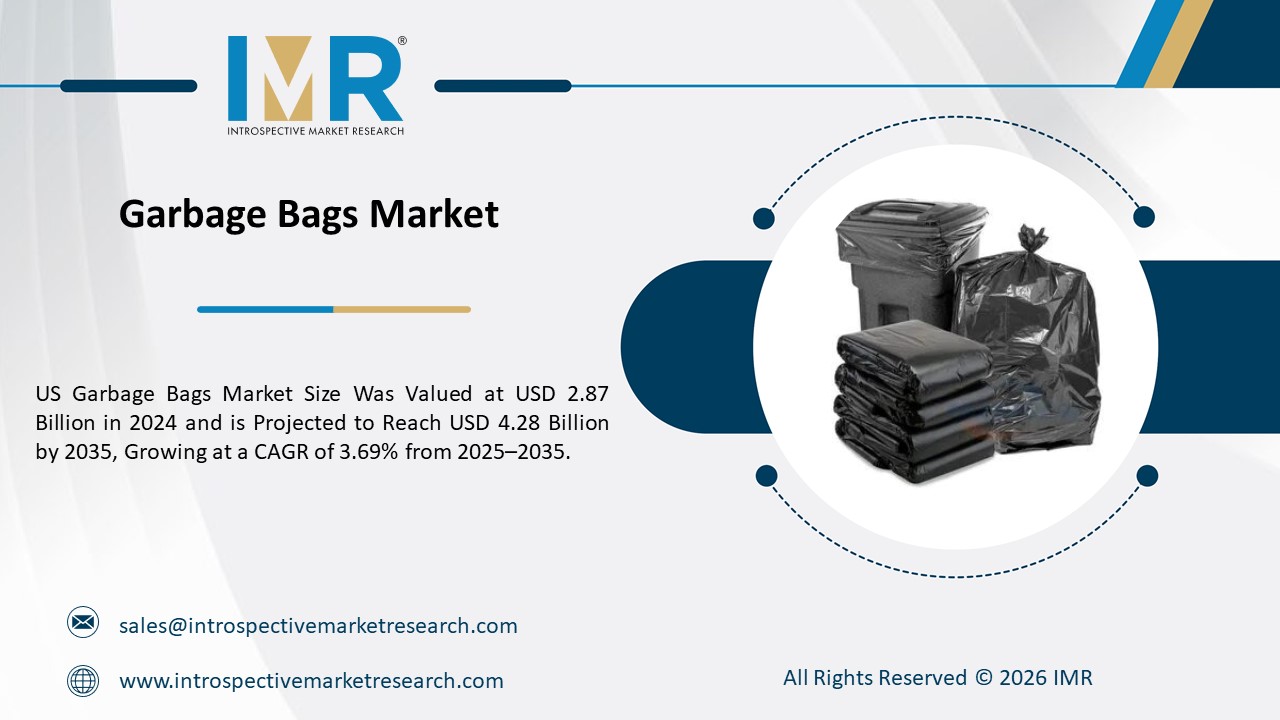
According to a new report published by Introspective Market Research, titled, ?Energy Drinks Market by Application and Packaging Type: Global Opportunity Analysis and Industry Forecast, 2024?2032,? the global Energy Drinks Market size was valued at $ 62.24 million in 2023, and is projected to reach $ 122.36 million by 2032, registering a CAGR of 7.8% from 2023 to 2032. An energy drink is a drink that is high in stimulants such as caffeine and sugar and is often loaded with nutritional supplements such as vitamins or carnitine. Energy drinks are widely known and advertised as beverages that can improve mental alertness and physical performance. Energy drinks are currently the fastest-growing sector of the beverage industry. These drinks are known to improve performance because they contain five times more caffeine than soft drinks and also some other derivatives like taurine, riboflavin, pyridoxine.
Consumption of energy drinks is growing rapidly compared to other beverage categories. Various changes are also made to the ingredient combinations keeping in mind the needs and preferences of the target demographic, which includes teenagers, young adults, and 18-34year olds. The great taste and flavor that energy drinks provide, many studies show that energy drinks can not only increase energy consumption, but also improve mood, improve physical endurance, reduce mental fatigue and increase reaction time. In addition, it is also claimed that energy drinks can provide extra energy depending on the ingredient profile and the amount of caffeine, taurine, plant extracts and vitamins.
The energy drink market is experiencing strong growth as it expands into non-traditional markets, and this expansion is likely to be driven by rising incomes, urbanization, and increasing awareness of health and wellness among the population worldwide. Many adults and young people regularly use energy drinks to support their busy and active lifestyles. Most of the consumption is for athletic and sports people to achieve better performance, stamina and endurance.
Fatigue has become one of the main features of today's modern life. The functioning of today's cities and economies shows that fatigue is not a temporary symptom, but a much bigger picture. Today, with more than four decades of neoliberalism and urbanization, exhaustion has become an inevitable part of people's lives. Along with the increased sales of energy drinks to stay active during work, the high consumption of energy drinks by athletes and athletes also helps to increase sales in the market.
Several energy drinks today focus on natural ingredients. Such deals are driven by growing health awareness and consumer knowledge of how conventional energy drinks containing artificial ingredients can harm their health. The market has recently seen a push towards natural energy drink ingredients that manufacturers claim improve energy and immunity. Such ingredients include coconut water, adaptogens, and mushrooms, among other healthy ingredients. This wave of health and wellness in the energy drink gives market participants great opportunities to develop healthy alternatives to the product.
Global Energy Drinks Market, Segmentation
The Energy Drinks Market is segmented based on Product Type, Nature, Age Group, Distribution Channel and region.
Product Type:
The Product type segment is further classified into Shots, Drinks, Drink Mixes. Among these, the Drinks sub-segment accounted for the highest market share in 2021. Consumers prefer the drinks to other equivalents because it satisfies their immediate hydration needs and provides essential nutrients for the well-being of the body. In addition, these drinks have a larger consumer base due to their versatility. Consumers have the freedom to drink these beverages at work, after training, and during leisure time as they are functional, which increases the demand for the product. The faucet segment is expected to grow significantly during the forecast period. The increasing availability of the product as a mixer has driven this segment. In addition, consumers choose mixes to make high-quality cocktails and spirits. In addition, several brands took the opportunity to introduce new flavors in blenders to attract new consumers. It was found that the frequency and amount of mixing alcohol with any form of caffeinated mixers, including energy drinks or cola, reduced the negative effects of alcohol and the consequences were significantly less harmful than alcohol alone.
Nature:
The Nature segment is further classified into Organic, Conventional. Among these, the Conventional sub-segment is anticipated to show the fastest growth by 2032. Consumer ignorance about organic products is expected to drive the growth of the traditional segment during the forecast period. The organic industry is still a nascent sector where consumer awareness of the benefits of organic beverages is significantly lacking. In addition, traditional drinks are usually cheaper than organic products because of the different ingredients. Retailers prefer traditional beverages over organic because they have a higher margin per square inch of shelf space.
Region:
The Energy Drinks Market in North America is projected to show the fastest growth by 2032. The increase in product consumption in the region is also due to the increase in disposable income, the birth of several domestic brands, and the increase in marketing and advertising, which promote product growth. North Americans consume more energy drinks than any other geographic market in the world due to changing demographics and consumer tastes and drinking habits. The globalization of the market and the phenomenon of migration contributed to changes in the drinking habits of consumers, who gradually adopted their drinking habits. This, in turn, opened up new opportunities for market participants to include different beverages in their selection.
Some of The Leading/Active Market Players Are-
- Monster Beverage Corporation (US)
- Red Bull GmbH (Austria)
- Coca-Cola Co. (US)
- PepsiCo Inc. (US)
- Kraft Foods Inc. (US)
- National Beverage Corp. (US)
- The Gatorade Company Inc. (US)
- Nestl? S.A.(Switzerland)
- Carlsberg A/S (Denmark)
- LT Group Inc (Philippinesand Other Active Players
Key Industry Developments
- October 2023: Quality Pack International, a member of Hell Group and the Azerbijan company signed an agreement to establish a joint venture company the Quality Pack Capian LLC. QPC?s objective is to implement a vertically integrated aluminum beverage can manufacturing and non-alcoholic beverage filling factory in the Alat Free Economic Zone of Azerbaijan, which can serve as a regional production hub for local and regional beverage brands, either selling empty cans alone or also filling them.
- September 2023: PepsiCo India launched a limited edition flavor of its Sting Energy drink, called Sting Blue Current. Sting Blue Current is available at 200 ml in single-serve packs across India.
Key Findings of the Study
- The energy drinks market is experiencing strong growth, with a projected CAGR of 7.8% from 2023 to 2032, driven by factors such as rising incomes, urbanization, and increased awareness of health and wellness.
- North America is projected to exhibit the fastest growth in the energy drinks market by 2032, driven by increased consumption, rising disposable incomes, the emergence of domestic brands, and robust marketing strategies.





